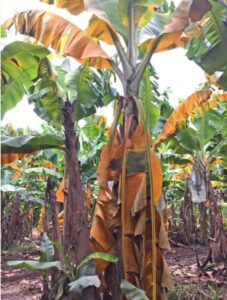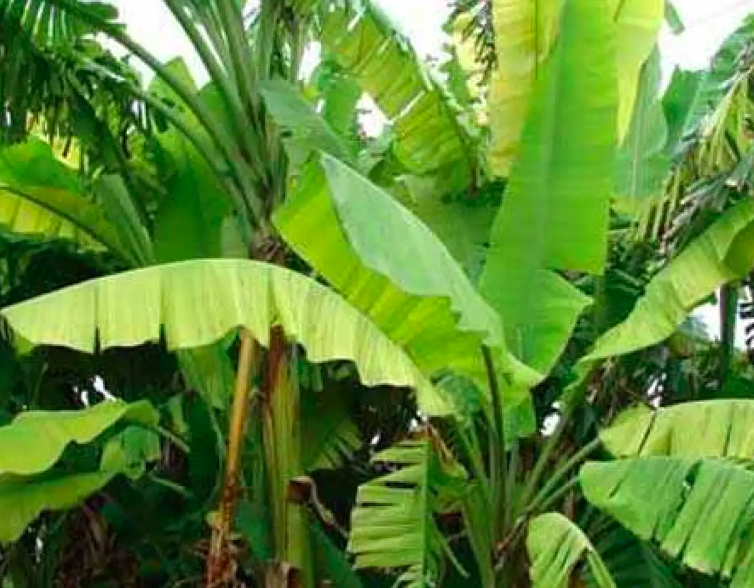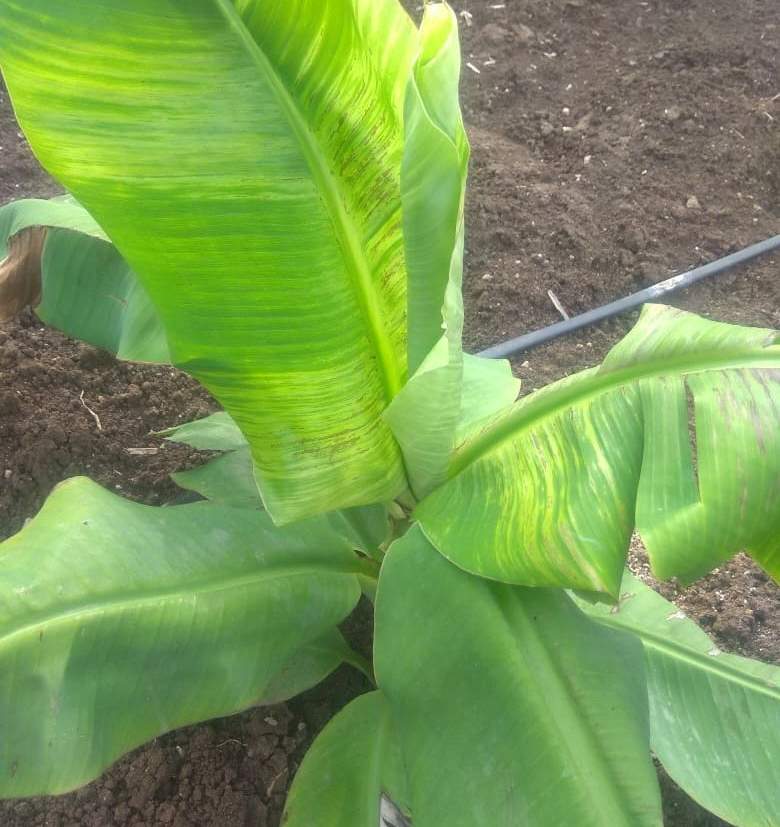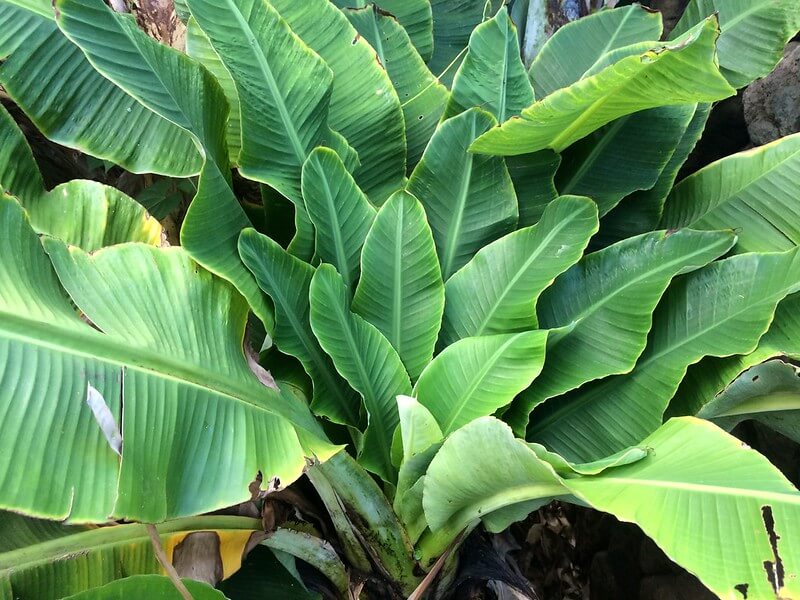What is the importance of the Fusarium wilt?
#Fusarium_wilt or #Panama_disease caused by a soil borne fungus Fusarium oxysporum f. sp. cubense is most devastating worldwide including India. It can infect almost all the commercial banana varieties of India. Once the pathogen is introduced into the field, it can survive in soil for more than 40 years and can cause total death of the plants. Fusarium wilt is becoming a major constraint of banana production and is rampant in Tamil Nadu, Karnataka, Andhra Pradesh, Kerala, Uttar Pradesh, Madhya Pradesh, Bihar, Odhissa, West Bengal and North Eastern states.
As the Fusarium strain can also attack Cavendish group of bananas, there is a possibility of incurring a heavy loss to Indian banana industry.


2. Tropical race 4 (TR4) is one of the strains of the fungus Fusarium oxysporum f. sp. cubense (Foc) that causes Fusarium wilt.
3. The virulent strain Tropical race 4 has been reported and to cause major damage in countries like Taiwan, Malaysia, Indonesia (Java, Sumatra, Sulawesi, Halmahera, Kalimantan on the island of Borneo and Papua Province on the island of New Guinea), mainland China, the Philippines’ island of Mindanao, Australia, Oman, Jordan, Mozambique, Lebanon, Pakistan, Laos and Vietnam and India.
4. External symptoms: The external symptoms are expressed only 4-5 months after planting. However, if the diseased suckers are planted, the symptoms of the disease can be seen even 2 months after planting. At initial stage, yellowing of leaf margins of older leaves and later the yellowing progresses towards the midrib and finally the whole leaf become yellowish. Then the yellowing of leaves spreads to upper leaves as well. The infected leaves gradually collapse at the petiole or towards the base of the midrib and hang down around the pseudostem and this gives ‘skirt” like appearance to the plant. The youngest leaves are the last to show the symptom and often stand erect giving ‘spiky’ appearance to the plant. The newly emerging leaves will be pale with reduced leaf lamina and finally emergence of the leaf will be stopped. Longitudinal splitting of the pseudostem and emergence of large number of side suckers before the death of infected plants.
5. Internal symptoms:Presence of yellow, red or brown strands on the corm and continuous black or brown or yellow coloured strands in the pseudostem and sometimes also in the bunch stalk due to the discoloration of vascular tissues caused by the fungus.
6. Which are the resistant sources/cultivars available to this virulent strain TR4 at global level?: Tissue culture Somaclonal variants (TBRI, Taiwan) – GCTCV-119, GCTCV-218 and GCTCV-219
7. The pathogen spreads by the: Movement and planting of Fusarium pathogen infected suckers, Movement of contaminated plant parts such as pseudostem tissues and leaves of infected plants, Soil adhering to agricultural implements, containers, tools, animals, footwear, clothes, use of soil as a substrate Hurricanes, Strong winds, Heavy rains causing flooding, Irrigation water, Surface drainage waters after rainfall.
How to manage the disease effectively?
The disease can be managed effectively only by following integrated disease management (IDM) practices. They are
1. Keep the sign board (indicating beware of TR4 with danger sign and restricted entry) at the entry of each field affected with Fusarium wilt Tropical race 4.
2. Demarcate the wilt infected plants with rope/ coloured ribbon for restricted entry inside the field.
3. Inject the wilt infected plants with Glyphosate 2-5 ml/ plant in two different places (preferably one at the bottom and second 2 feet above from the ground).
4. After the death of the herbicide injected plants, burn them immediately or wait till the completion of the harvest of all other plants.
5. The affected plants should not be pulled out and put them in the field or in the irrigation channel.
6. As soon as the sign of wilt infection is noticed, drenching of Carbendazim (0.1 to 0. 3%) @ 3-5 litres per plant for 3-5 times at 15 days interval and pseudostem injection of 3 ml of 0.1% carbendazim solution at rd th th 3 , 5 and 7 month after planting for all the plants (both infected and uninfected) may be carried out.
7. Follow “come clean and go clean” approaches (wear polythene shoe or foot cover while entering into the field and the same may be removed before the exit of the field. The same may be preserved for next use). Also 2 plastic drums with tap connection at the bottom of the drum may be kept at the entrance of the field. One for keeping water and another one for storing disinfectant (1% poly dimethyl ammonium chloride @ 10 g in 1 lire of water). All the tools used including hand and foot may be washed first in water and latter in disinfectant.
8. Keep the plant and field very clean without weeds and banana plants wastes.
9. Protect the plant from the attack of weevils (swab using brush/spray the pseudostem with Neem oil 3 ml + chlopyriphos 3ml in one litre of water or give pseudostem injection with Triazophos @ 2 ml (Triazophos solution can be prepared by mixing 150 ml of chemical in 350 ml of water) in two places over the pseudostem or keeping the pseudostem traps swapped with Beauveria bassiana @ 20 numbers/acre. For corm weevil either soil application of Carbofuran @ 40g / plant or cartap hydrochloride @ 10 g/ plant, rd th around the plant at 3 and 5 month after planting. This practice will protect the plants from nematode infection as well.
10. During the harvest, dehanding may be carried out so as to avoid the spread of the disease through peduncle while marketing to other un-infested areas. How to manage the disease effectively?
11. After the harvest is over, entire plants may be up-rooted and burnt in situ completely.
12. Follow crop rotation including paddy/ sugarcane/ tapioca/ onion/ pineapple once or twice followed by banana for 2-3 cycles.
13. Before the next crop, i) the field must be inundated/flooded with water for a period of 1 to 3 months or ii) biological disinfection method may be followed ie spreading 500 to 1000kg/acre of paddy or maize straw and flooding the field for about 20 to 30 days. A minimum of field capacity should be maintained for at least 20 days and iv) Sow the field with sunn hemp seeds and allow it to grow for 45 days and in situ ploughing may be carried out.
14. The tractor tyres and ploughs and tools must be disinfected immediately before the exit of the field and also once before the entry of the field.
15. Tissue cultured plants should be used instead of suckers.
16. Use the bio-primed tissue cultured plants especially in TR4 infested areas.
17. When suckers are used as planting material, they should be extracted from disease free fields/plants and after the extraction they should be pared and dipped immediately in carbendazim (0.2%) for 30-45 minutes and planted.
18. Intercropping with onion/growing cover crops.
19. Follow the good agricultural practices so as to improvement of soil health by applying recommended dose of fertilizers (apply less of N and more of K2O, prefer only nitrate nitrogen), apply 1 kg of wood ash, more amount of organic manures such as vermicompost, neem cake, well decomposed farm yard manure etc, (for this banana waste recycling may be followed) application of effective microbes etc.
20. Soil application of rice chaffy grain formulation of endophytic Penicillium pinophilum + rhizospheric Trichoderma asperellum @ 100 g/plant or Jaggery based liquid formulation of Trichoderma sp. + nd th Bacillus cereus @ 2 litres/plant for 3 times (at the time of planting, 2 and 4 month after planting.
21. Follow drip irrigation/fertigation.
22. Do not drain out water from the infested field to other fields to avoid further spread.




